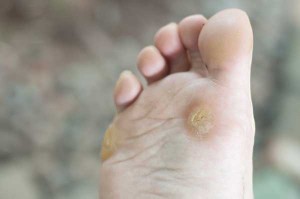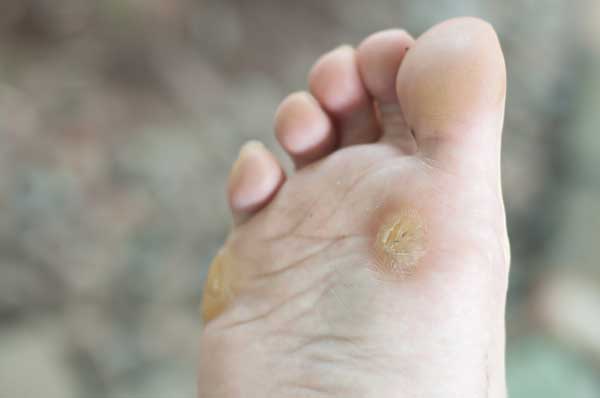 A callus is an area of hard, thickened skin on the foot that is formed in response to pressure or friction. When pressure is concentrated in a small area, a corn, which has a central core, may develop. If the pressure is not relieved, calluses and corns can become painful.
A callus is an area of hard, thickened skin on the foot that is formed in response to pressure or friction. When pressure is concentrated in a small area, a corn, which has a central core, may develop. If the pressure is not relieved, calluses and corns can become painful.
Common sites of corns and calluses are the ball of the foot, under the big toe, tips of toes and any bony prominence. ‘Soft’ corns may develop between the toes, where the skin is moist from sweat or inadequate drying. Sometimes, the pressure of the corn or callus may produce inflammation, which can result in pain, swelling and redness.
The symptoms can include:
- Thickened patch of hard skin on the foot
- Hard, small bump of skin that may have a central core
- White and rubbery bumps of skin (‘soft’ corns)
- Pain when pressure or friction is applied to the area.
Treatment
If you have corns or calluses, or think you may be developing them, see your podiatrist for treatment. Options may include:
- Identifying and removing the possible cause of friction and pressure
- Professional reduction of the callus or corn to relieve pain
- Customised padding to redistribute pressure
- If needed, permanent shoe inserts (orthoses) to offer long-term pressure relief
- Advice on appropriate footwear
- Advice on appropriate foot care, such as applying moisturiser daily.
Don’t try to treat corns and calluses yourself
The body protects skin tissues from pressure or friction damage by producing an area of hard skin so, unless the cause of the pressure or friction is found and removed, calluses and corns will continue to form. Over-the-counter treatments, such as corn plasters, can damage the healthy surrounding skin if used incorrectly. Don’t ever attempt to cut away or scrape a callus as there is a risk of infection if you accidentally cut yourself.Never attempt “at home” surgery as cutting deeply or gouging at the centre of a corn can damage healthy tissue, nerves and/or blood vessels. The end result may be infection or scarring.
Seek advice from a podiatrist regarding the most appropriate treatment for you.

